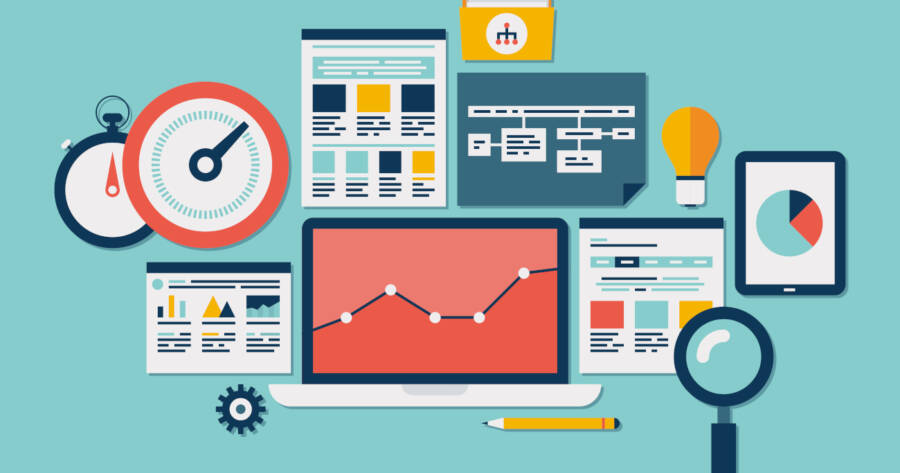As businesses transition into online spaces, the demand for talented web designers has surged. If you’re someone looking to shift gears in your career, web design presents an appealing, creative, and highly marketable skill set. Fortunately, you don’t have to attend a four-year university to start earning an income. There are a wide variety of choices available, and you can find the right web design course is you start searching now.
The Basics of Web Design
Web design is more than just creating aesthetically pleasing websites. It involves user experience design, interface layout, graphic design, and even a bit of psychology to understand user behavior. Learning web design equips you to create websites that are not only visually stunning but also functional and user-friendly.
HTML, CSS, and JavaScript are the fundamental languages you must learn. HTML (HyperText Markup Language) is the foundation of any webpage, while CSS (Cascading Style Sheets) helps you apply styles to the HTML elements. JavaScript adds interactivity and dynamic elements to a website. Familiarizing yourself with these languages provides you with the essential toolkit to start your web design journey.
Where to Start
The first step is to identify what kind of learner you are. Are you a visual learner, or do you prefer reading through text? Do you thrive in structured environments, or are you more of a self-starter? Knowing your learning style will help you choose the appropriate resources.
Online tutorials and courses abound for every kind of learner. Websites like Codecademy, Udemy, and Coursera offer interactive lessons in web design that range from beginner to advanced levels. Many of these courses provide real-world examples and allow you to work on projects that you can add to your portfolio.
Free Learning Options
Cost can be a barrier for many people. However, don’t let that deter you. There are plenty of free resources available to learn web design.
- YouTube: The popular digital video platform is home to all sorts of guides on web design topics, from the basics to advanced skills.
- FreeCodeCamp: This platform offers a 100% free self-paced coding bootcamp with interactive lessons and projects in HTML, CSS, and JavaScript, among others.
- GitHub: Many professionals and educators post free tutorials and even whole courses here. You can clone these repositories and practice as you go along.
- MOOCs (Massive Open Online Courses): Websites like edX offer courses from universities around the world for free, although a certificate might cost extra.
- Online blogs and articles: Websites like Medium host a plethora of articles that can help you understand web design concepts without costing you a dime.
Using these free resources, you can build a strong foundation in web design, which can then be supplemented with more specialized paid courses if you choose.
Crafting Your Portfolio
As you gain skills and knowledge, it’s crucial to showcase them effectively. A portfolio is your calling card in the web design world. Potential employers or clients will want to see what you can do, and there’s no better way to show off your skills than by displaying your work.
Utilize your newly acquired skills to build your portfolio website. Make it a living example of what you can accomplish, displaying a range of abilities from layout design to interactive elements. Keep it updated with any new projects, and don’t hesitate to redo older ones as your skills improve.
Networking and Community Building
As you delve deeper into web design, don’t overlook the value of networking and becoming part of the community. Join online forums, participate in webinars, or contribute to open-source projects to make connections with other aspiring and established designers. Platforms like Stack Overflow, Reddit’s r/web_design, or specialized Facebook groups can be goldmines for tips, reviews, and problem-solving.
Interacting with your peers not only broadens your understanding but also opens doors for collaboration and freelance opportunities. As you share your struggles and triumphs, you may find mentors or become one, which can be incredibly enriching to your learning journey.
Learning Tools and Software
While knowledge of HTML, CSS, and JavaScript is fundamental, familiarity with design tools can give you an edge. Software like Adobe Photoshop, Sketch, and Figma are standard in creating website mockups, while text editors like Sublime Text or Visual Studio Code can make coding more efficient.
These tools usually have free trials, but they can be pricey for long-term use. Luckily, there are free alternatives like GIMP for graphic design or Atom for code editing. Invest time in learning these tools to become more versatile and efficient in web design.
Find The Right Fit Today!
Web design is an ever-evolving, creative field that offers numerous opportunities for those willing to learn. The plethora of resources, both paid and free, ensure that anyone with an internet connection and a willingness to commit can join this dynamic profession.
With a balance of creativity and practicality, web design allows you to create stunning websites while building a fulfilling, lucrative career. Your path to becoming a web designer is just a click away, so continue searching online to learn more and to kickstart or revamp your career.
